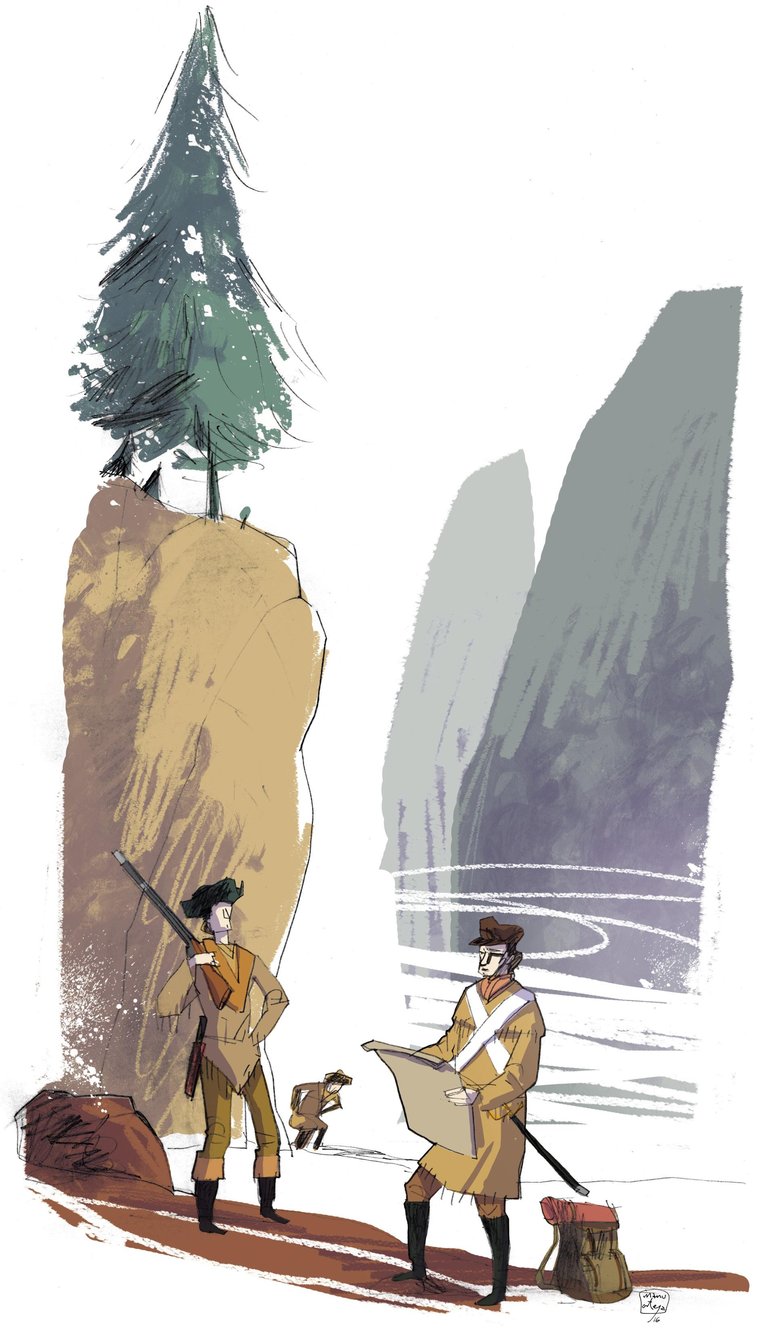Dr. Pills Rush on the Lewis and Clark expedition

Dr. Rush told Lewis clearly: “Take one or two laxative pills at the time the disease is detected.” Those miracle pills were created by Dr. Rush. The main component was a substance called calomel, mercury chloride. As effective as toxic.
Meriwether Lewis, secretary of Thomas Jefferson, is preparing for a long journey full of dangers. After the purchase of Louisiana in 1803, Jefferson devised an expedition to explore the acquired lands and study the possibility that the Missouri River was a good commercial route to cross the western part of the continent. And also to claim that these lands were owned by the Americans.
Lewis was chosen to lead the expedition. And Lewis asked for help from William Clark, a friend of the army, who “had a strong character, prudence, a capacity for survival in the forest, and a knowledge of the nature and customs of the Indians,” according to Lewis. To prepare the expedition, Lewis and Clark received training from experts from different areas. In fact, this expedition would also have scientific objectives: to investigate animals, plants and geography of those unknown lands.
In addition, Lewis learned from Dr. Rush's hand the medical knowledge he might need during the expedition. Benjamin Rush was the most prestigious American physician of the time, a friend of Jefferson and one of the signatories of the American Declaration of Independence. As was usual at that time, he defended that all diseases were produced by imbalance of moods or body fluids. There were four humors: blood, phlegm, bile and black bile. Thus, excess blood caused fever, for example, and excess bile caused constipation. In the first case the remedy was the extraction of blood and, in the second, the taking of laxatives.
Calomel was a good medicine for it. In high doses it was a violent laxative. Immediate emptying of the intestines led bile to the right level. But not only that, but it also served to cure syphilis in small doses. Hundreds of Dr. Calomel tablets were taken from the expedition kit. Rush as well as calomel powder and calorie tank.
Some 40 men left St. Charles (Missouri) on May 21, 1804, upstream of the Missouri River. In two and a half years they reached the Pacific coast and turned around. As for the scientific objectives, in addition to mapping the area explored, 178 plants and 122 new species of animals were found, among them the coyote, the American antelope, the deer of the controls, the Lewis muffin, the Clark walnut, etc.
On the other hand, they met about 70 tribes, almost always peacefully. In fact, one of the objectives of the mission was to establish good relations with the Indians, among other things, in order to carry out commercial deals. Moreover, they had to count on the help of the Indians, lost in the Rocky Mountains or harsh winters to avoid ending the dead hunger.
They lost only one man; three months after the expedition Captain Floyd fell ill and died. It is believed that it was appendicitis. In this case Lewis could do nothing. But he managed to cope with other health problems.
Dr. Pills Rush had a great expedition success. Day by day, they barely ate meat from hunted animals. That at best. When there was no hunting, dogs were also eaten, as did the Indians. Another option was dry salmon, but they preferred the dog. However, they ate almost exclusively meat and without fiber. Thus, constipation was a bad day by day on the expedition. Fortunately, Rush pills were extremely effective.
Rush pills and calomel powder were also needed to fight syphilis. “Sioux and exercise have a curious habit,” Lewis wrote in his diary, “of offering beautiful women to those who want to express their gratitude.” Months later he began writing comments about his men such as: “In general they are healthy, except for some venereal diseases, very common among the natives… that men have taken them from them”. Or, “Goodrich and McNeal are very wrong with the syphilis taken by Chino last winter of women… We’ll take a break so they can use mercury peacefully.”
The recommendation was to use the calomel until the patient begins to whistle. It is now known to be a symptom of mercury poisoning. Mercury is toxic to bacteria that cause syphilis, but also to the host. However, Lewis and Clark chose their men well. Hard men. They were able to cope with the dangers of that long journey, as well as harsh medicines and treatments.
Two hundred years later the mercury footprint left by the expedition has served archaeologists. Thanks to this, archaeologists have been able to confirm the exact location of one of the expedition's camps. Surely the only one known. Located next to the river Lewis called “Traveler’s Rest” in present-day Montana. In the area were found remains of the campfire and the cast of lead, and about 90 meters, a point supposedly used as a bath. This distance, 300 feet, was the distance that Lewis and Clark followed according to military rules between the campfire place and the toilet. The test was clear: that point used as a bath was rich in mercury.
Bibliography:
BRANDT, A. (2003): “Sex, Dog Meat, and the Lash: Odd Facts About Lewis and Clark.” National Geographic.
DEVLIN, S. (2004): “Resarchers pinpoint> location of Travelers’ Rest”. Missoulia.
FESSENDEN, M. (2015): “How to reconstruct Lewis and Clark’s journey: Follow the mercury-laden latrine pits.” Smithsonian.com
HIGBY, G. J. : “Rush’s Bilious Pills”. Discovering Lewis and Clark.
NATIONAL PARK SERVICE: “Lewis and Calrk Expedition. A National Register of Historic Places Travel Itinerary”.
NATIONAL PARK SERVICE: “Information on the Arikara Indians. Recorded by Members of the Lewis and Clark Expedition.”
SMITH, B. (2004): “Archaeologist to report on Travelers' Rest”. Ravalli Republic.
Buletina
Bidali zure helbide elektronikoa eta jaso asteroko buletina zure sarrera-ontzian











